Blooming bonsai trees are a stunning sight. In this article, we’ve listed the top 22 most beautiful flowering bonsai trees.
Generally, you treat and style flowering species just like other bonsai trees: they require the right amount of sunlight, should only be pruned after blooming, and need low-nitrogen fertilizer.
One well-known example of flowering bonsai is the Azalea, a common choice. Azalea flowers can be pink, red, or even purple. Bougainvillea and Wisteria are also gorgeous flowering bonsai examples. We even have an article on different types of bonsai trees for after you’ve read this article.
Japanese Maple Bonsai (Acer palmatum)

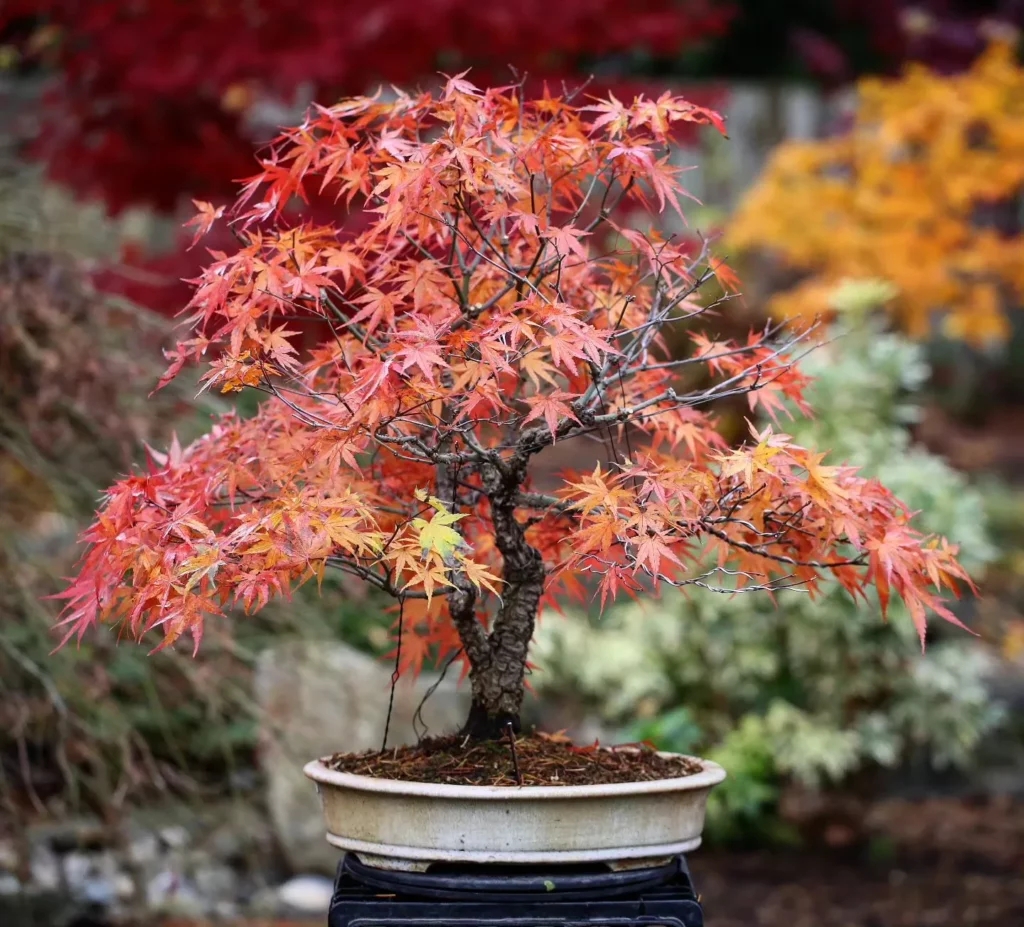
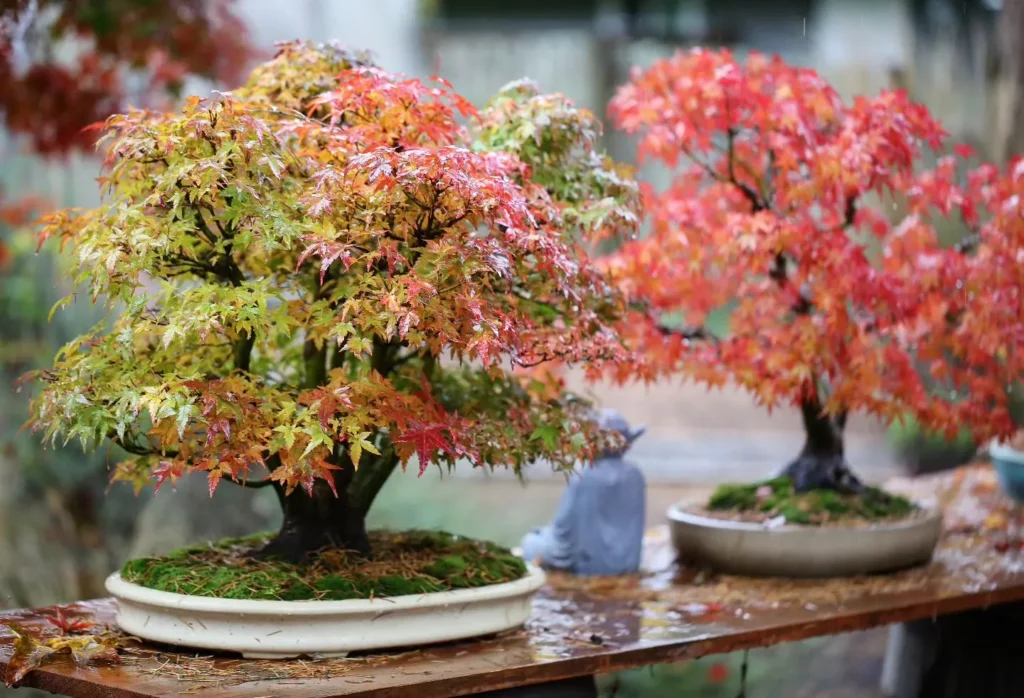
Japanese Maple bonsai produces small, delicate, and typically red or burgundy-colored flowers in spring. The flowers are not the main attraction; instead, the bonsai is prized for its stunning foliage and attractive bark.
- Leaves change color with the seasons, offering vibrant reds, oranges, and yellows in the fall.
- The tree may produce small winged fruits (samara) after flowering.
- Pruning and shaping accentuate its graceful branching structure.
Chinese Elm Bonsai (Ulmus parvifolia)
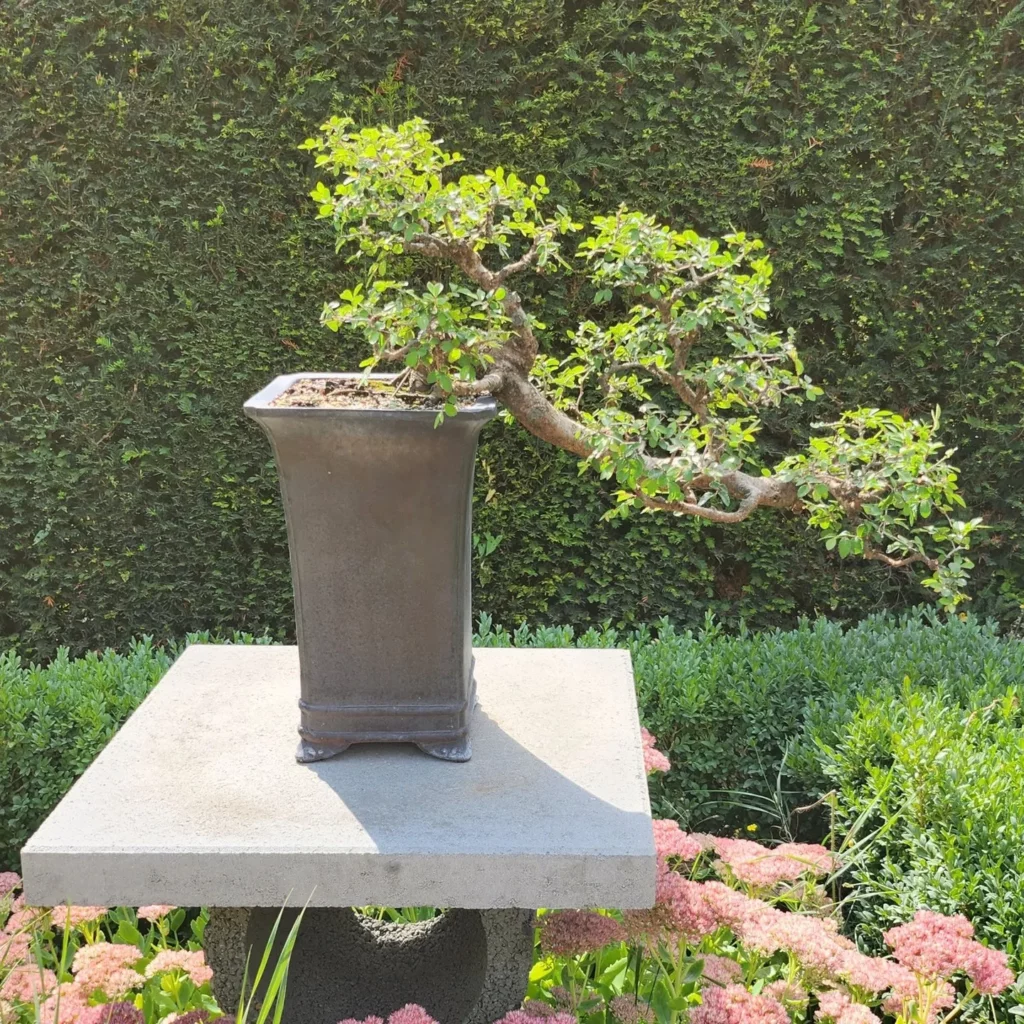


Chinese Elm bonsai exhibits tiny greenish-yellow flowers in late summer, but they are inconspicuous compared to its small, serrated leaves and fine branch structure.
- Its distinctive bark exfoliates with age, revealing an attractive mottled appearance.
- Prized for its ability to thrive in a wide range of climates.
- Susceptible to leaf reduction techniques, making it suitable for bonsai styling.
Ficus Bonsai


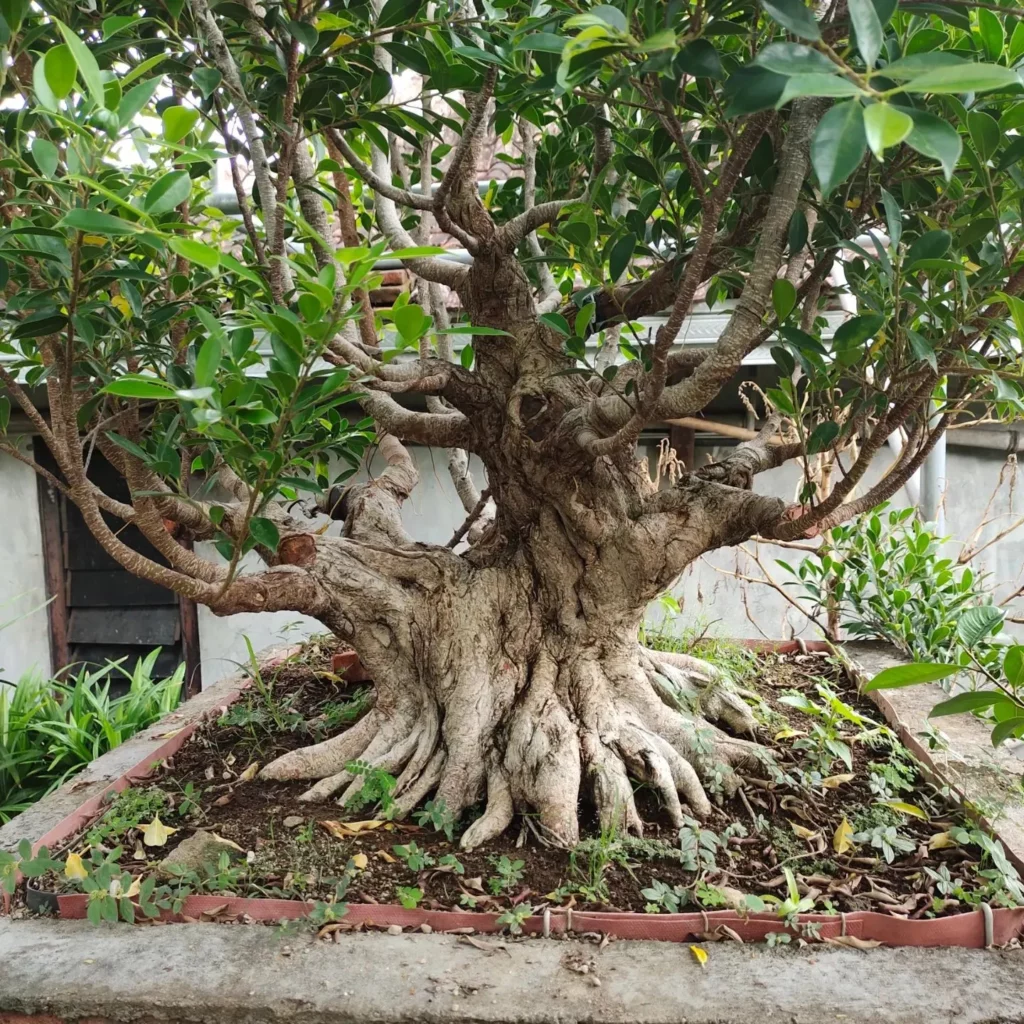
Ficus bonsai rarely flowers when cultivated as indoor bonsai, but when it does, it produces small, inconspicuous fig-like structures.
- Known for its glossy, dense foliage.
- Ideal for indoor cultivation due to its adaptability to low light conditions.
- Ficus species like Ficus retusa and Ficus microcarpa are popular choices.
Satsuki Azalea Bonsai (Rhododendron indicum)



Satsuki Azalea bonsai showcases stunning and vibrant funnel-shaped flowers in various colors, such as red, pink, purple, or white, depending on the cultivar.
- Flowers are often multicolored and feature striking patterns.
- These bonsai require a precise regimen of care and pruning to encourage flower production.
- They are prized for their exquisite beauty during the flowering season.
Portulacaria afra Bonsai (Elephant Bush or Dwarf Jade)



Portulacaria afra produces small, star-shaped, pink or white flowers that can add a delicate touch to this succulent bonsai.
- Known for its small, round, fleshy leaves that resemble a jade plant.
- Suitable for bonsai beginners due to its ease of care.
- Frequent pruning helps maintain a compact shape.
Olive Bonsai (Olea europaea)


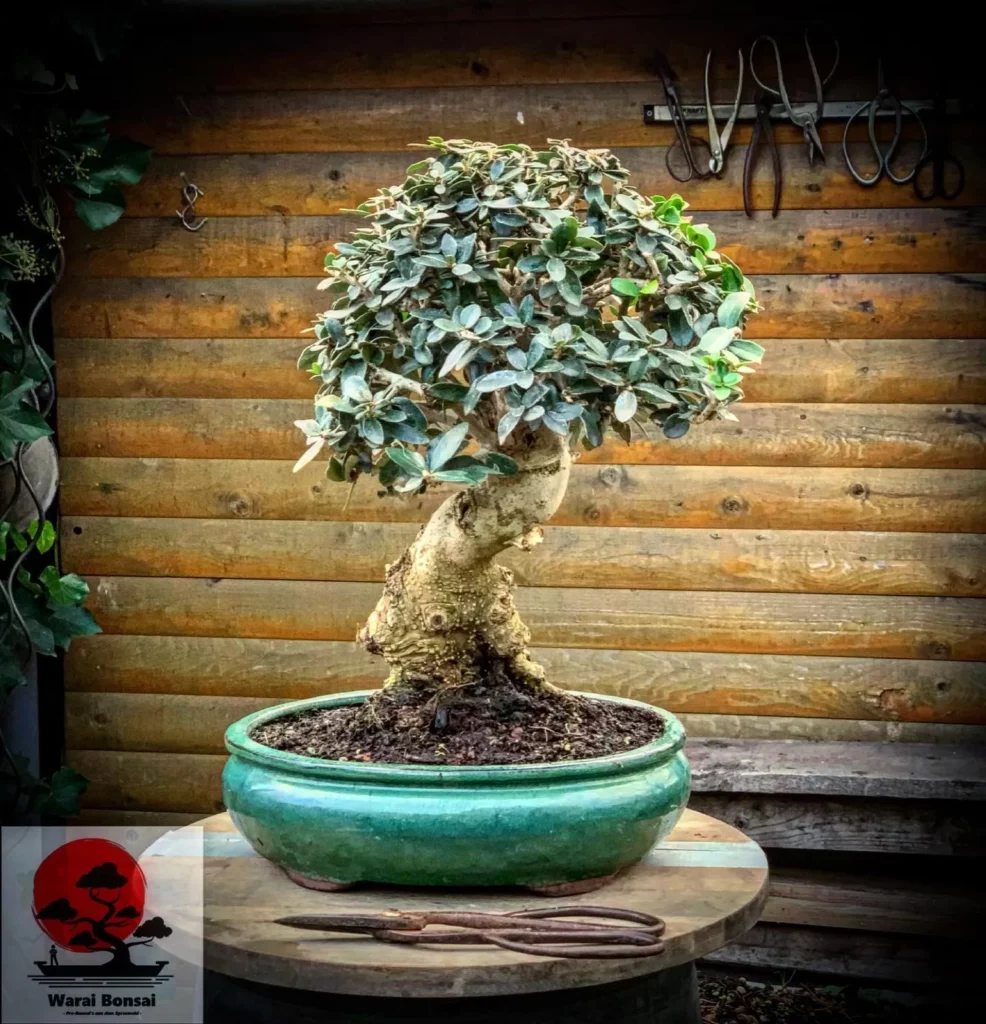
Olive bonsai produces tiny, fragrant, cream-colored flowers in spring, followed by small olives that can add to the bonsai’s charm.
- The bonsai showcases gnarled trunks and silvery-gray foliage.
- Olive trees are symbols of peace and longevity.
- Pruning and shaping accentuate their unique character.
Chinese Sweet Plum Bonsai (Sageretia theezans)

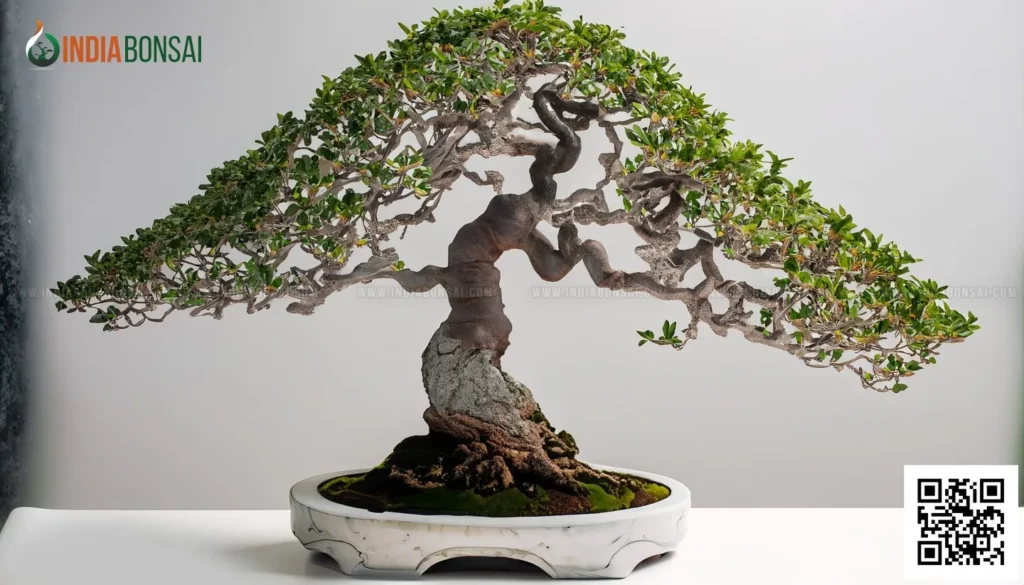

Chinese Sweet Plum bonsai displays small, fragrant white flowers with yellow centers that contrast beautifully with its dark green foliage.
- The tree’s slender branches and small leaves make it suitable for bonsai.
- Prized for its pleasing fragrance and the ease with which it can be trained.
- Produces small plum-like fruits in favorable conditions.
Gardenia Bonsai



Gardenia bonsai boasts fragrant, white, star-shaped flowers that contrast beautifully with its dark green, glossy leaves.
- Gardenias are revered for their sweet scent and lush appearance.
- Pruning and wiring are used to shape their compact, bushy forms.
- Adequate humidity and care are essential to keep the bonsai healthy.
Azalea Bonsai (Rhododendron)

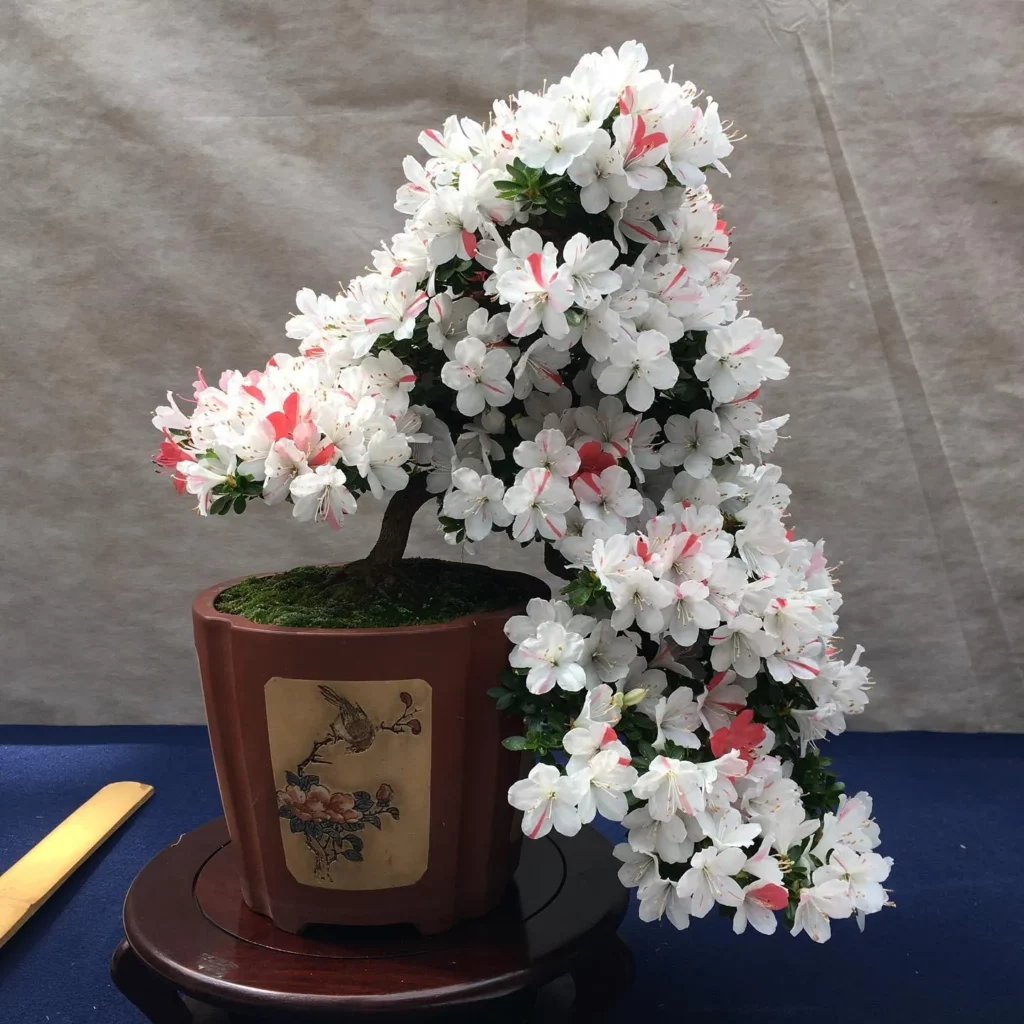
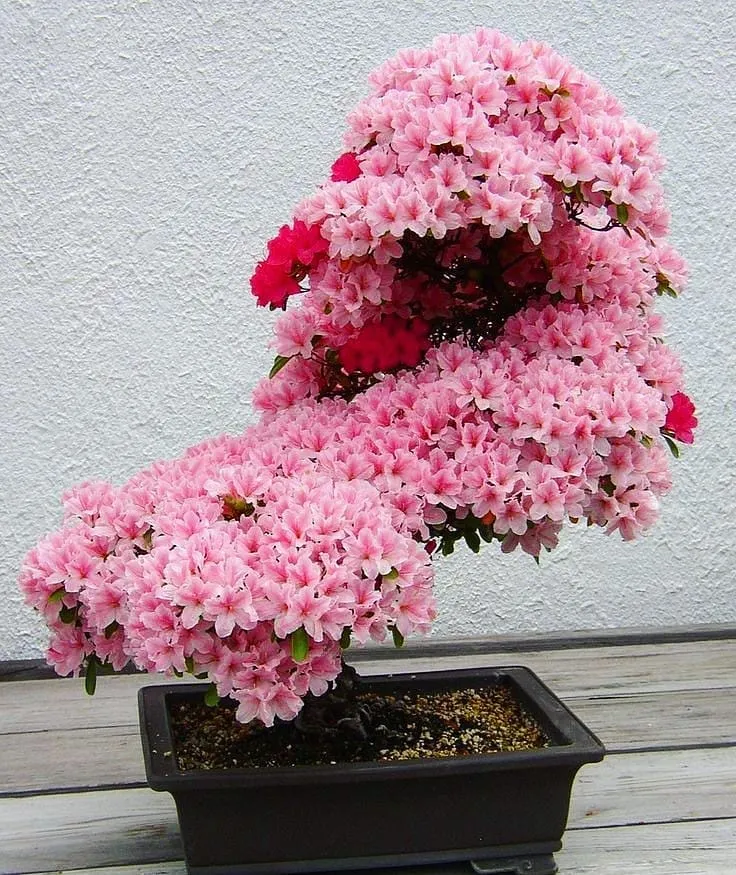
Azalea bonsai produces vibrant, trumpet-shaped flowers in a wide range of colors, including red, pink, purple, and white, depending on the variety.
- Azaleas are renowned for their stunning floral displays.
- Pruning and wiring techniques enhance their compact and bushy growth.
- They require specific care to promote flowering and health.
Crabapple Bonsai (Malus spp.)



Crabapple bonsai features showy, fragrant, and often pink or white flowers in spring, which can be followed by small apples that add to the tree’s appeal.
- Known for their attractive bark and seasonal fruit.
- Pruning and styling accentuate their natural beauty.
- Different crabapple species offer variations in flower color and fruit size.
Crape Myrtle Bonsai (Lagerstroemia indica)



Crape Myrtle bonsai displays clusters of small, crinkled flowers in colors like pink, red, lavender, or white, providing a delightful summer show.
- Prized for their colorful and abundant blossoms.
- Trained into various styles, including informal upright and broom.
- Regular pruning and shaping maintain their desired form.
Wisteria Bonsai (Wisteria sinensis)



Chinese Wisteria bonsai showcases cascading clusters of fragrant purple, blue, or white flowers, creating a picturesque display.
- The bonsai is known for its stunning and abundant floral sprays.
- Requires careful training to develop the classic wisteria form.
- Patience is needed as it takes several years to mature and flower profusely.
Camellia Bonsai (Camellia japonica)



Camellia bonsai presents elegant, waxy flowers in various shades of red, pink, and white, often with a prominent yellow center.
- Known for its glossy, dark green leaves and ornate flowers.
- Pruning and shaping techniques enhance its natural beauty.
- Requires specific care to maintain its health and vigor.
Zelkova serrata



Zelkova serrata, also known as Japanese Zelkova or Keyaki, produces small greenish flowers that are not the main feature of this bonsai. It is appreciated for its finely serrated leaves and lovely bark.
- The tree is valued for its rugged, mottled bark texture.
- Popular for its adaptability to various bonsai styles, including broom and informal upright.
- Often chosen for its similarity to elm trees but with better resistance to Dutch elm disease.
Cedrus deodara



Cedrus deodara, or Deodar Cedar, produces small, inconspicuous male and female cones rather than traditional flowers. Its primary appeal lies in its graceful, weeping branches and evergreen foliage.
- The bonsai features elegant, cascading branches.
- Pruning and styling techniques are employed to emphasize its graceful form.
- Deodar Cedars are known for their hardy nature and adaptation to bonsai cultivation.
Japanese Cherry Blossom (Prunus serrulata)



Prunus serrulata, or Japanese Cherry Blossom, is famous for its breathtaking, pink or white cherry blossoms that burst into bloom in spring, covering the bonsai with a cloud of flowers.
- Celebrated for its iconic cherry blossom displays.
- Pruning and wiring techniques are used to enhance its branch structure.
- Requires careful care to ensure profuse flowering and health.
Korean Fir (Abies koreana)



Abies koreana, also known as Korean Fir, produces small, cylindrical cones rather than traditional flowers. This bonsai is appreciated for its short, dark green needles and compact growth habit.
- Prized for its unique appearance and miniature cones.
- Often styled in an informal upright or slanting form.
- Requires well-draining soil and careful care to thrive.
Japanese Wisteria (Wisteria floribunda)



Wisteria floribunda, or Japanese Wisteria, produces long, cascading clusters of fragrant flowers in shades of purple, blue, pink, or white, making it a favorite for bonsai enthusiasts.
- Known for its stunning and aromatic flower displays.
- Requires patience and skill to train into the classic wisteria form.
- Pruning and maintenance are necessary to keep the bonsai healthy and blooming.
Pepper Tree (Zanthoxylum piperitum)



Zanthoxylum piperitum, or Pepper Tree, features tiny, inconspicuous flowers that are not the main attraction. This bonsai is valued for its aromatic leaves and unique texture.
- Prized for its fragrant, glossy foliage and textured bark.
- Often trained in informal upright or broom styles.
- Suitable for those who appreciate its culinary uses and unique appearance.
Olive Tree – Olea europaea (Dwarf)



The dwarf variety of Olea europaea, or Olive Tree, produces small, inconspicuous flowers. However, it is cherished for its gnarled trunks, silvery foliage, and potential for fruiting.
- The bonsai showcases aged and weathered trunks.
- Often styled in informal upright or literati forms.
- Requires specific care to manage its growth and encourage fruiting.
Japanese Apricot (Prunus mume)



Prunus mume, or Japanese Apricot, bears fragrant, pink or white flowers in late winter or early spring before its leaves emerge.
- Known for its early and fragrant blossoms.
- Pruning and shaping techniques enhance its aesthetic appeal.
- Highly regarded for its cultural significance in East Asia, where it symbolizes hope and endurance.
Firethorn – Pyracantha spp.



Pyracantha bonsai, also known as Firethorn, produces small, white flowers in spring, followed by vibrant berries in fall, adding color and interest to the bonsai.
- Prized for its seasonal interest, with spring blooms and fall berries.
- Frequently styled in the informal upright or cascading forms.
- Requires proper pruning to maintain its shape and encourage berry production.




